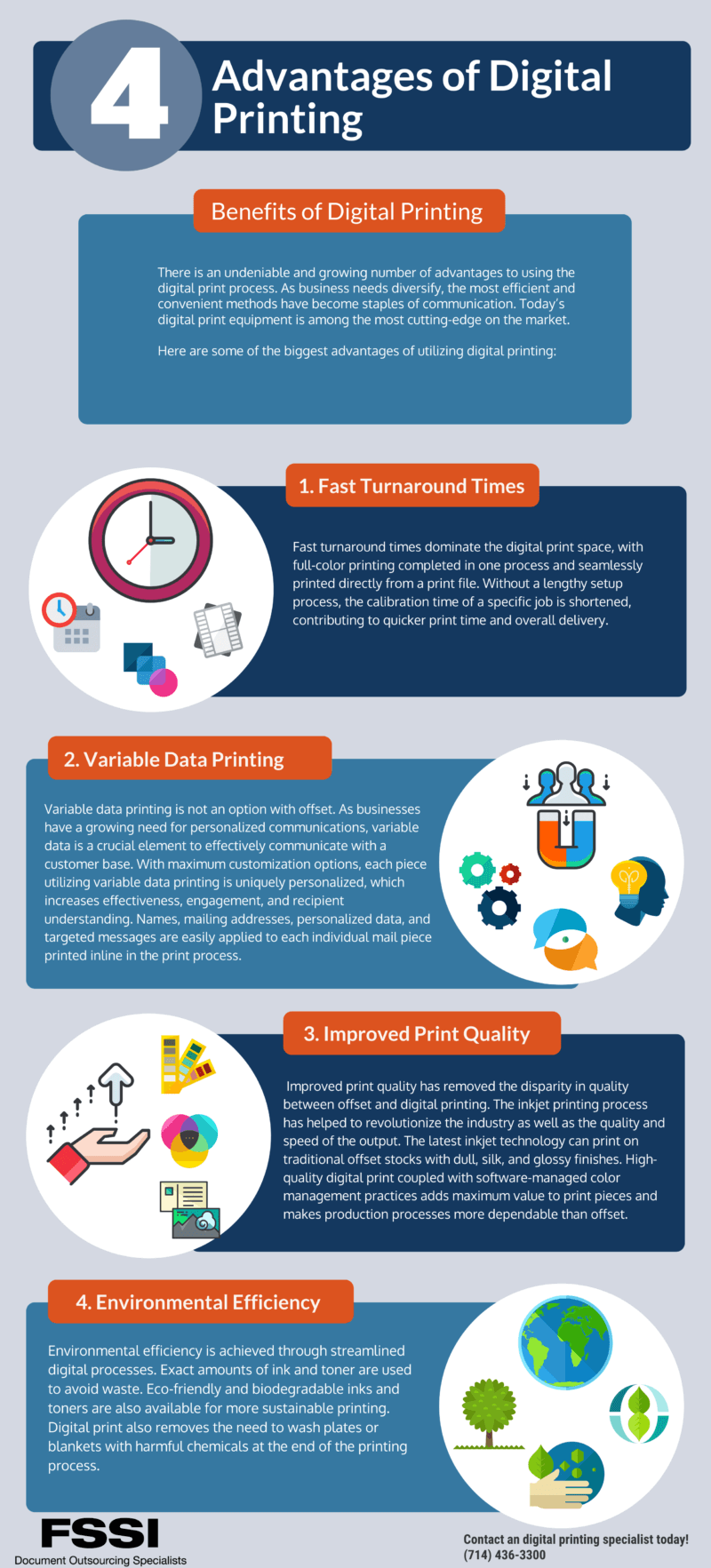The Facts About Digital Printing Revealed
Wiki Article
The Digital Printing PDFs
Table of ContentsGetting My Digital Printing To WorkRumored Buzz on Digital PrintingA Biased View of Digital PrintingThe Basic Principles Of Digital Printing Some Ideas on Digital Printing You Need To KnowWhat Does Digital Printing Do?
Variable information printing, such as straight mail with customized codes and addresses, is preferably suited for electronic printing. Digital quick printing just needs 4 steps of design, evaluation, printing and binding to get every little thing done. Digital quick printing has an unparalleled benefit: print on need.According to PMMI, electronic printing permits brands and producers to react rapidly to consumer demands while enhancing the supply chain, lowering warehousing expense and waste, and appreciating faster time to market. That all audios excellent, yet just how does this technology do all that? The major differentiator of these technologies is that there are no set up charges and no plates with digital printing.
3 Simple Techniques For Digital Printing
According to Wikipedia, the best distinction between electronic printing and traditional techniques such as lithography, flexography, gravure, or letterpress - Digital Printing is that there is no need to replace printing plates in electronic printing, whereas in these analog printing approaches home plates are repetitively changed. This causes quicker turn-around time and decreases price when using electronic printing.Digital printing is highly adaptable, so it's easy to make changes to the plan design swiftly. It all goes back to the plates.
With standard printing approaches, short-run printing is just not feasible. Since an excellent style can make or damage your product, digital printing constantly develops top quality, clear and vibrant graphics each time.
Digital printing is the procedure of printing digital-based images directly onto a range of media substratums. There is no need for a printing plate, unlike with balanced out printing. Digital data such as PDFs or desktop computer publishing data can be sent directly to the electronic printing press to print on paper, image paper, canvas, textile, synthetics, cardstock and other substrates.
The Of Digital Printing
According to PMMI, digital printing enables brands and suppliers to react quickly to client needs while boosting the supply chain, decreasing warehousing expense and waste, and appreciating faster time to market. That all audios terrific, however just how does this innovation do all that? The major differentiator of these modern technologies is that there are no set up fees and no plates with digital printing.This results in quicker turnaround time and lowers price when making use of electronic printing.

The Ultimate Guide To Digital Printing
With standard printing methods, short-run printing is just not feasible. Due to the fact that a fantastic layout can make or damage your product, electronic printing consistently creates premium, clear and colorful graphics each time.
According to PMMI, digital printing allows brand names and producers to react quickly to customer needs while enhancing the supply chain, reducing warehousing expense and waste, and enjoying faster time to market. That all audios terrific, however exactly how does this innovation do all that? The significant differentiator of these innovations is that there are no set-up costs and no plates with digital printing.
The Buzz on Digital Printing
According to Wikipedia, the best distinction in between digital printing and conventional techniques such as lithography, flexography, gravure, or letterpress is that there is no requirement to change printing plates in digital printing, whereas in these analog printing techniques the plates are repeatedly changed. This results in quicker turn-around time and lowers price when making use of digital printing.Rapid production means getting your item to market quicker. It likewise indicates it's easier and faster to make modifications later on, when you change a recipe, include a SKU, or produce seasonal packaging. Digital printing is very adaptable, so it's simple to make modifications to the plan style quickly. All of it goes back to the plates.

Things about Digital Printing
Digital printing is the process of printing digital-based photos straight onto a variety of media substrates. There is no requirement for a printing plate, unlike with offset printing. Digital data such as PDFs or desktop publishing documents can be sent out straight to the electronic printing press to publish theoretically, image paper, canvas, fabric, synthetics, cardstock and various other substratums.Report this wiki page